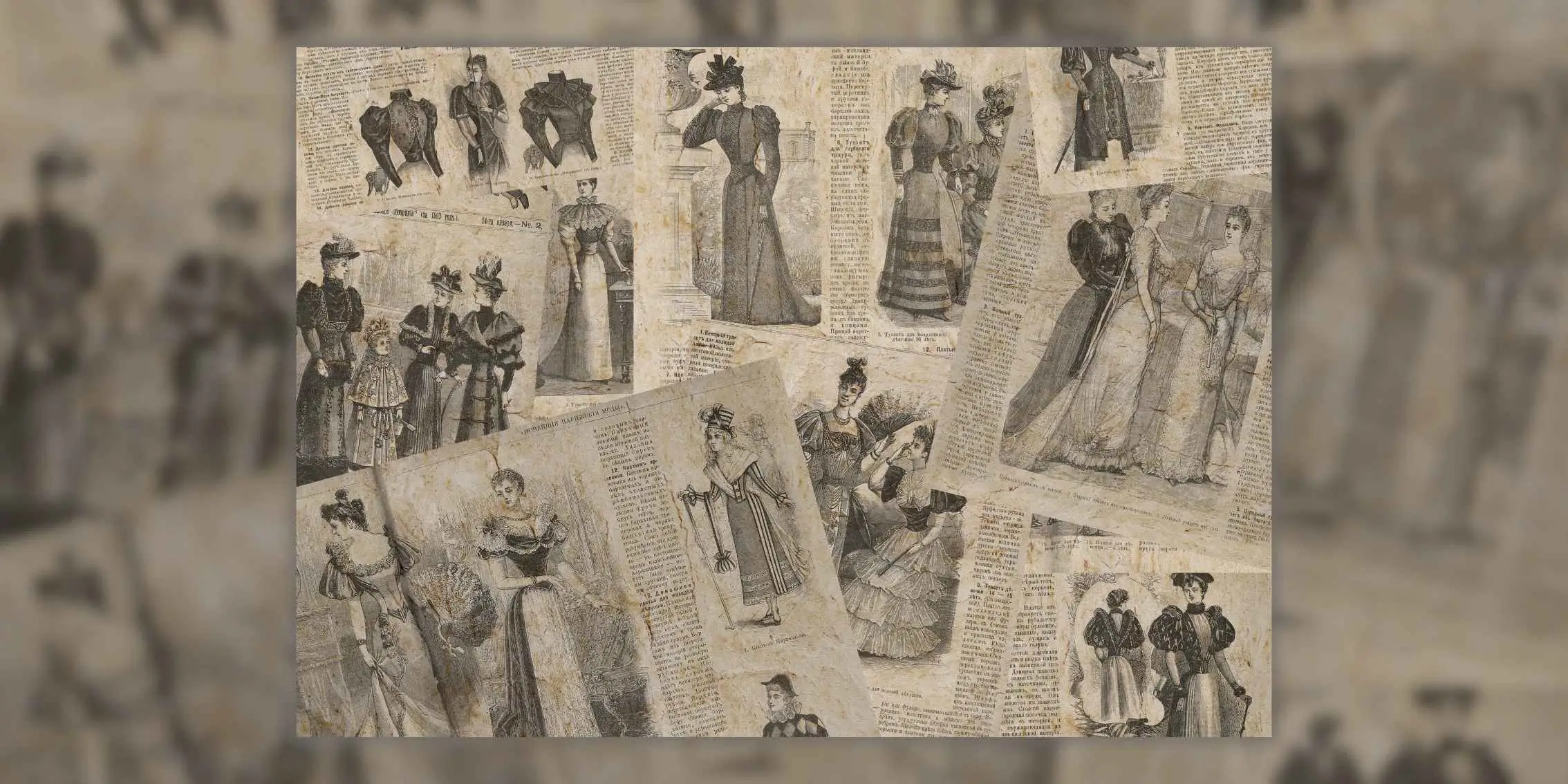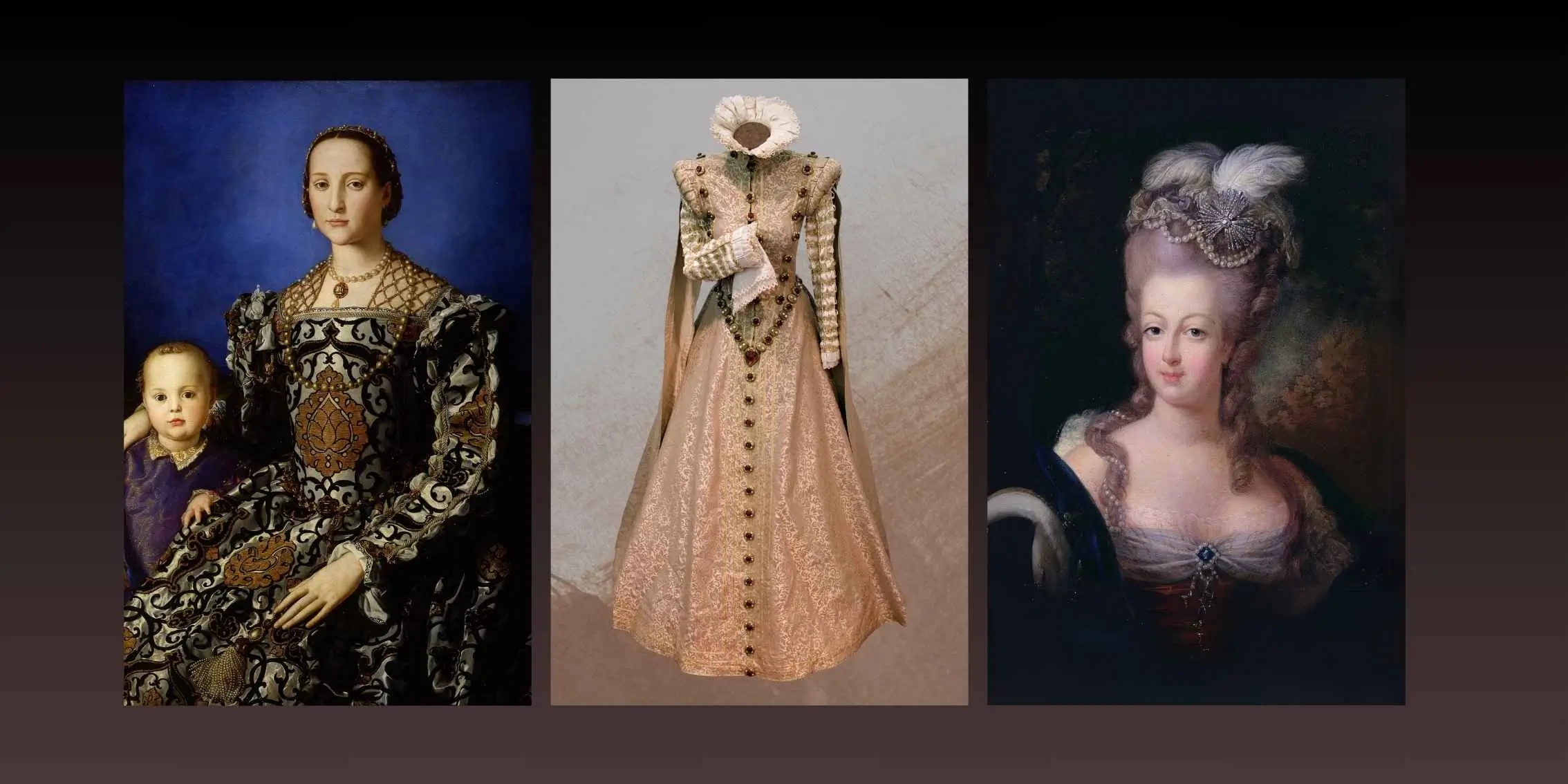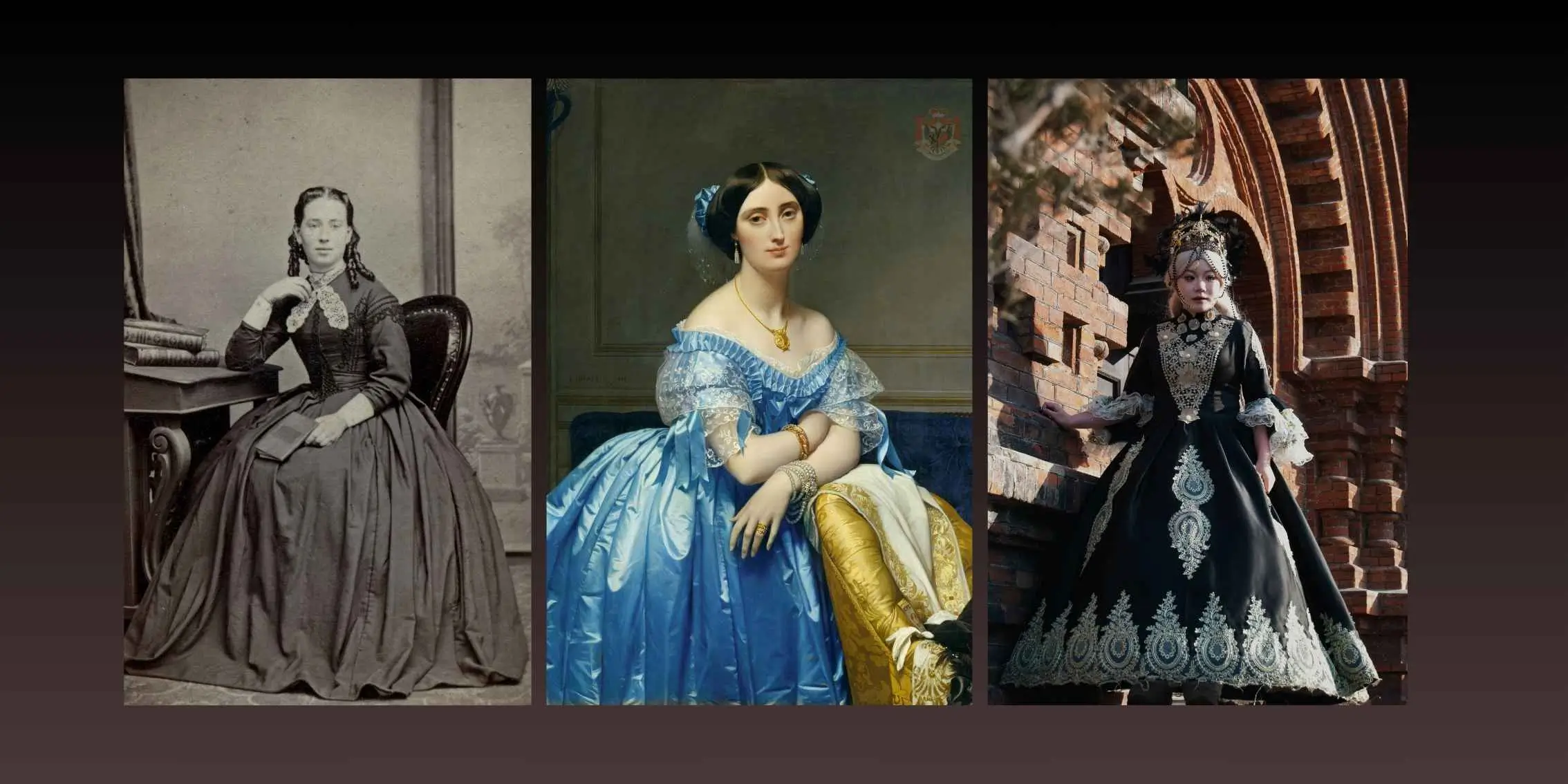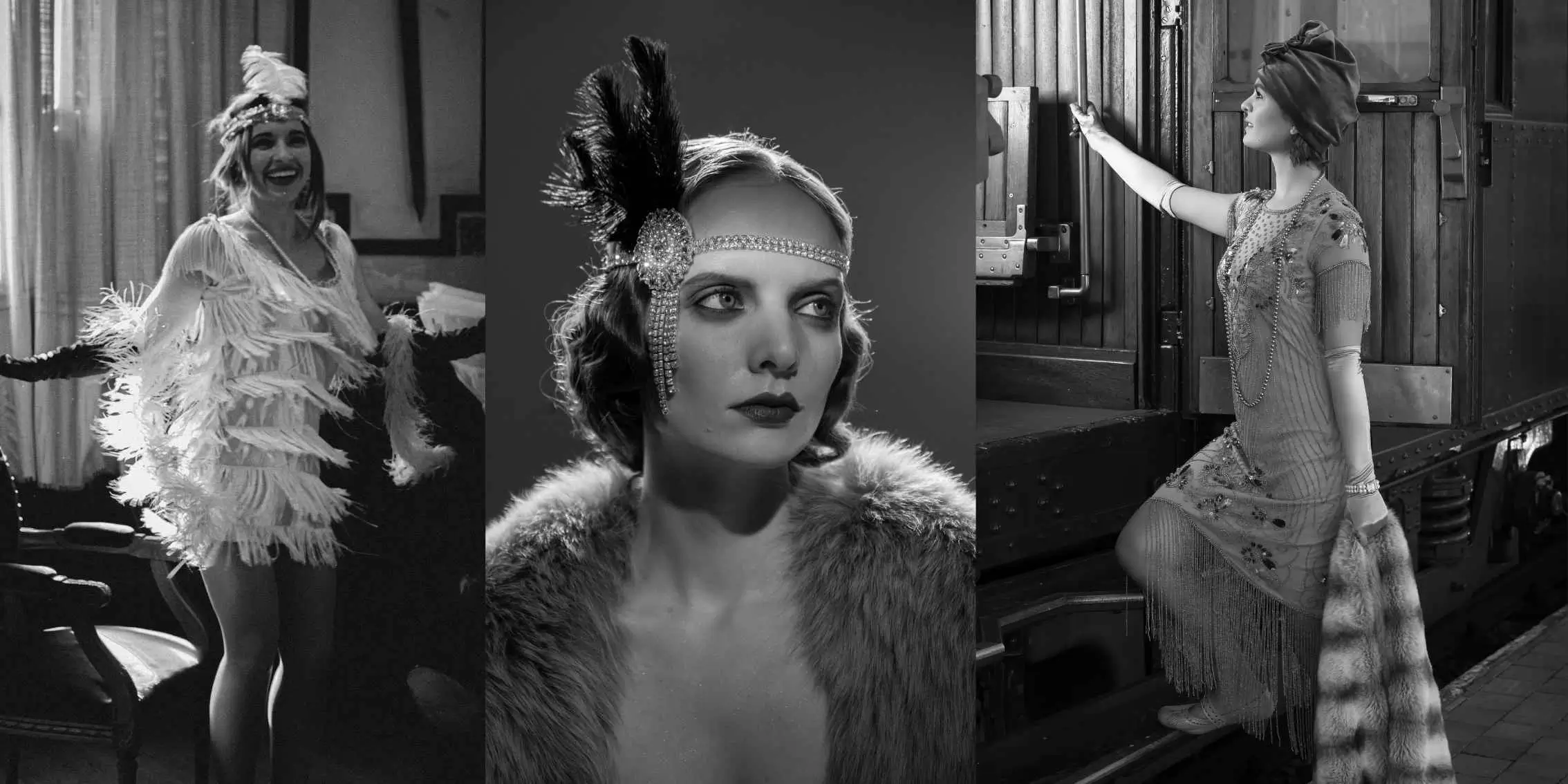Fashion doesn’t merely respond to the moment—it carries centuries of ideas, innovations, and cultural influences on its shoulders. Whether we see a contemporary designer reimagining Victorian lace or a high-street label bringing back 1980s power suits, it’s clear that historical fashion trends continue to impact what we wear today. Styles that once defined entire eras find their way into modern collections, reminding us that the past is never truly left behind.
 Image source: Freepik
Image source: Freepik
In this article, we’ll examine how history influences fashion, exploring key eras that shaped modern style and the ways these legacies show up in today’s designs. We’ll also look at why understanding historical trends can expand your creative vision and offer practical benefits for anyone working in fashion. Finally, we’ll introduce Module 5 of The Online Fashion Design Institute’s online course, a deep dive into fashion history that helps you merge the best of the past with the demands of the present. By the end, you’ll see how knowledge of yesteryear’s looks can spark fresh thinking and open new doors in your design journey.
 Image source: Canva
Image source: Canva
Fashion trends can be fleeting, yet many silhouettes, patterns, and embellishment techniques trace their roots to past epochs—sometimes centuries ago. Designers who study these origins often discover fresh ways to adapt them for modern audiences. A Victorian corset might evolve into a structured yet comfortable bodice, or Renaissance embroidery could inspire intricate detailing on a contemporary gown. When you grasp the legacy of these elements, you gain a broader creative repertoire and an appreciation for how fashion moves in cycles—always revisiting ideas but never in the exact same way.
Clothes tell stories that go far beyond fabric and thread. They reflect social norms, technological advancements, and the overall climate of their time. Recognizing that 1920s flappers emerged in response to women’s newfound freedoms, or that 1980s excess mirrored economic booms and pop-culture influence, adds depth to your work. You’re not just copying an old look; you’re tapping into a narrative that still resonates. This can be a powerful way to connect with audiences who value both aesthetics and authenticity.
Nostalgic or vintage-inspired lines frequently attract attention in today’s fast-paced fashion landscape. Mainstream retailers routinely launch “retro” collections, while luxury brands present historical homages in runway shows. Consumers appreciate a fresh twist on something they recognize, and referencing a famous era can provide both novelty and comfort. Whether you focus on minimalist 90s streetwear or Baroque-inspired gowns, capitalising on how history influences fashion can be a savvy way to stand out.
Let’s take a closer look at five pivotal periods whose legacies continue to reverberate. From refined Renaissance silhouettes to the vibrant statements of the 1980s, each era has contributed distinctive elements that designers still rework and reimagine today.
 Image source: Canva
Image source: Canva
Opulence defined Renaissance fashion. Wealthy patrons commissioned luxe fabrics like silk, velvet, and brocade, often embellished with detailed embroidery to signify status. Corsetry started taking form, shaping torsos into elegant silhouettes. Artistic and scientific progress across Europe fuelled creativity, making clothing a display of sophistication.
Designers evoke Renaissance grandeur through richly textured textiles, stiff bodices, and elaborate ornamentation. Alexander McQueen, for example, often nodded to Renaissance motifs—ruffled collars, dramatic silhouettes—while blending them with futuristic twists.
 Image source: Canva
Image source: Canva
Marked by Queen Victoria’s lengthy reign, this period introduced crinolines, bustles, high collars, and tightly laced corsets. Industrialization made fabrics more accessible, while social hierarchies remained visible through ornate details such as lace and ruffles. For women in polite society, fashion was both a status symbol and a moral statement.
From Gothic Lolita in Japan to romantic bridal couture, Victorian flourishes—like lace panels, corseted waists, and full skirts—recur in contemporary design. Some brands pair these historical elements with modern materials or edgy styling for a dramatic yet wearable balance.
 Image source: Canva + Pexels
Image source: Canva + Pexels
The aftermath of World War I brought social and political shifts that allowed women greater autonomy. Flappers symbolize this new freedom with dropped waistlines, shorter hemlines, and beaded embellishments reflecting Art Deco’s geometric flair. Meanwhile, men’s suits became slightly looser, signifying a move away from strict formality.
Beaded fringe, sequinned party dresses, and Art Deco jewellery remain popular for evening wear and special occasions. Designers often tap into the 1920s for themed capsule collections, blending that decade’s exuberance with today’s fabric technologies or sustainability considerations.
With World War II over, post-war optimism manifested in Christian Dior’s “New Look,” featuring cinched waists and wide, voluminous skirts. Hollywood icons like Marilyn Monroe and Grace Kelly amplified a vision of feminine elegance. Men’s suits emphasised clean lines, projecting confidence in a period of renewed economic growth.
Tea-length dresses, cat-eye sunglasses, and polka-dot patterns consistently reappear, offering a taste of 1950s glamour. Contemporary designers frequently reinterpret these shapes in lightweight materials, aligning classic curves with modern comfort and an inclusive range of body shapes.
Boldness was the watchword of the 80s. Big hair, big shoulders, and vibrant neon epitomised the decade’s larger-than-life attitude. Power dressing for women emerged alongside economic booms, and streetwear evolved from hip-hop, skate, and pop-culture influences, quickly infiltrating mainstream fashion.
Decade revivals bring back statement shoulders, neon hues, and logo-centric streetwear. Labels like Balenciaga or Vetements often fuse 80s silhouettes—like oversized blazers or chunky trainers—with high-fashion finishes. This interplay of nostalgic references and modern materials creates an unmistakably contemporary edge.
While entire eras can guide a collection, designers also borrow specific elements—maybe a Victorian lace cuff or a 70s floral print—and weave them into modern lines. Nostalgia-driven marketing harnesses the pull of memories and shared cultural moments, ensuring these references resonate widely.
Exploring fashion history isn’t just about nostalgia; it’s about gleaning aesthetic, structural, and material insights that might otherwise remain untapped. By learning how silhouettes evolved or why certain fabrics became mainstream, you enrich your imagination and can experiment in ways that feel fresh yet rooted in tradition.
Garments that subtly reference the past often carry an emotional or storytelling dimension. A wedding dress inspired by the 1950s might symbolise timeless romance, while a jacket with 80s detailing can speak to bold self-expression. Offering these layers of meaning can help you connect with consumers seeking more than a quick trend fix.
In a marketplace saturated with fast-changing looks, designers who understand how history influences fashion can stand out. You might blend a 1920s flapper silhouette with 21st-century technical fabrics—striking a balance between the familiarity of vintage styling and the novelty consumers crave. This blend of old and new often resonates strongly, appealing to niche enthusiasts and mainstream shoppers alike.
For a deeper understanding of fashion history and modern design, Module 5 of The Online Fashion Design Institute’s online fashion design course explores how historical influences continue to shape contemporary fashion. This module covers:
By combining historical insight with practical skills, you’ll learn to translate vintage inspiration into forward-thinking design—whether for runway collections, retail lines, or personal projects.
Historical fashion is more than aesthetics—it’s about understanding fabric, construction, and finishing techniques that bring period-inspired designs to life. If you want to refine these skills, our guide on Fabric Fundamentals: A Designer’s Guide to Textiles is a great next step. Having a strong foundation in materials and garment structure allows you to confidently reimagine historical elements for modern wearability.
Fashion’s past is full of inspiration waiting to be rediscovered. Over the coming months, we’ll be diving into specific eras, designers, and cultural movements, with articles like:
Each deep dive will offer new ways to connect historical fashion trends with contemporary design, helping you expand your knowledge and creative approach.
From Renaissance silhouettes to 1980s power suits, each era adds depth and character to modern design. By recognizing the cultural shifts and innovations that propelled these styles, you can reimagine timeless looks for today’s market—offering genuine storytelling and creative flair.
At The Online Fashion Design Institute, we believe in bridging historical awareness with forward-thinking design. Module 5 of our online fashion design course delves into the cultural, social, and technical forces behind past trends—helping you adapt them in ways that feel fresh, relevant, and commercially viable.
Ready to transform yesterday’s influence into tomorrow’s success? Enroll today.